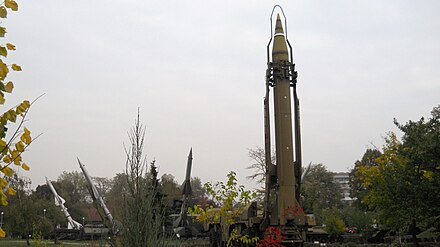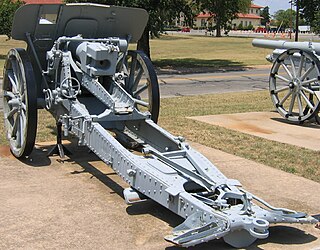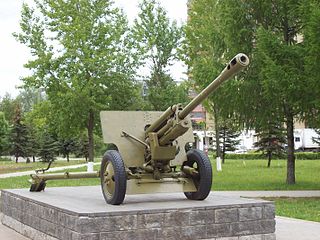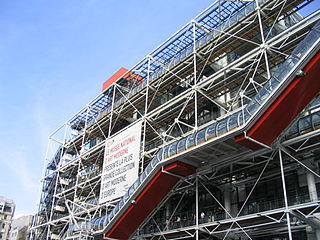
Centre Georges Pompidou, commonly shortened to Centre Pompidou and also known as the Pompidou Centre in English, is a complex building in the Beaubourg area of the 4th arrondissement of Paris, near Les Halles, rue Montorgueil, and the Marais. It was designed in the style of high-tech architecture by the architectural team of Richard Rogers and Renzo Piano, along with Gianfranco Franchini.

Plovdiv is the second-largest city in Bulgaria, with a city population of 346 893 as of 2018 and 675,000 in the greater metropolitan area. It is an important economic, transport, cultural, and educational center. There is evidence of habitation in Plovdiv dating back to the 6th millennium BCE, when the first Neolithic settlements were established. It has been considered to be one of the oldest cities in the world however archaeological excavations in 2016 and 2017 have shown that this may not be the case.

The Field Museum of Natural History (FMNH), also known as The Field Museum, is a natural history museum in Chicago, and is one of the largest such museums in the world. The museum maintains its status as a premier natural-history museum through the size and quality of its educational and scientific programs, as well as due to its extensive scientific-specimen and artifact collections. The diverse, high-quality permanent exhibitions, which attract up to two million visitors annually, range from the earliest fossils to past and current cultures from around the world to interactive programming demonstrating today's urgent conservation needs. The museum is named in honor of its first major benefactor, the department-store magnate Marshall Field. The museum and its collections originated from the 1893 World’s Columbian Exposition and the artifacts displayed at the fair.

The National Museum of Natural History is a natural history museum administered by the Smithsonian Institution, located on the National Mall in Washington, D.C., United States. It has free admission and is open 364 days a year. In 2016, with 7.1 million visitors, it was the fourth most visited museum in the world and the most visited natural history museum in the world. Opened in 1910, the museum on the National Mall was one of the first Smithsonian buildings constructed exclusively to hold the national collections and research facilities. The main building has an overall area of 1,500,000 square feet (140,000 m2) with 325,000 square feet (30,200 m2) of exhibition and public space and houses over 1,000 employees.

The Cleveland Museum of Art (CMA) is an art museum in Cleveland, Ohio, located in the Wade Park District, in the University Circle neighborhood on the city's east side. Internationally renowned for its substantial holdings of Asian and Egyptian art, the museum houses a diverse permanent collection of more than 61,000 works of art from around the world. The museum provides general admission free to the public. With a $755 million endowment, it is the fourth-wealthiest art museum in the United States. With about 770,000 visitors annually (2018), it is one of the most visited art museums in the world.

The SS. Cyril and Methodius National Library is the national library of Bulgaria, situated in the capital city of Sofia. Founded on 4 April 1878, the library received the status of Bulgarian National Library three years later and the Bulgarian National Revival Archive was merged into it in 1924.

The Government Museum or Madras Museum is a museum of human history and culture located in the neighbourhood of Egmore in Chennai, India. Started in 1851, it is the second oldest museum in India after the Indian Museum in Kolkata. It is particularly rich in archaeological and numismatic collections. It has the largest collection of Roman antiquities outside Europe. Among them, the colossal Museum Theatre is one of the most impressive. The National Art Gallery is also present in the museum premises. Built in Indo-Saracenic style, it houses rare works of artists like Raja Ravi Varma.

The German National Library is the central archival library and national bibliographic centre for the Federal Republic of Germany. Its task is to collect, permanently archive, comprehensively document and record bibliographically all German and German-language publications since 1913, foreign publications about Germany, translations of German works, and the works of German-speaking emigrants published abroad between 1933 and 1945, and to make them available to the public. The German National Library maintains co-operative external relations on a national and international level. For example, it is the leading partner in developing and maintaining bibliographic rules and standards in Germany and plays a significant role in the development of international library standards. The cooperation with publishers has been regulated by law since 1935 for the Deutsche Bücherei Leipzig and since 1969 for the Deutsche Bibliothek Frankfurt.

The Museum of Military History – Military History Institute in Vienna is the leading museum of the Austrian Armed Forces. It documents the history of Austrian military affairs through a wide range of exhibits comprising, above all, weapons, armours, tanks, aeroplanes, uniforms, flags, paintings, medals and badges of honour, photographs, battleship models, and documents. Although the museum is owned by the Federal Government, it is not affiliated to the Federal museums but is organised as a subordinate agency reporting directly to the Ministry of Defence and Sports.

The National Historical Museum in Sofia is Bulgaria's largest museum. It was founded on 5 May 1973. A new representative exhibition was opened in the building of the Court of Justice on 2 March 1984, to commemorate the 13th centenary of the Bulgarian state.

New Bulgarian University is a private university based in Sofia, the capital of Bulgaria. Its campus is in the western district of the city, known for its proximity to the Vitosha nature park,

The Earth and Man National Museum is a mineralogical museum in the centre of Sofia, the capital of Bulgaria.

The National Archaeological Museum is an archaeological museum in the centre of Sofia, the capital of Bulgaria. It occupies the building of the largest and oldest former Ottoman mosque in the city, originally known as Koca Mahmut Paşa Camii. The construction started in 1451 under grand vizier Veli Mahmud Pasha but due to his death in 1474 the mosque has been completed in 1494. The museum was established as a separate entity in 1893 as the National Museum directed by Czech Václav Dobruský with its headquarters in the former mosque that previously housed the National Library between 1880 and 1893.

The House of Humour and Satire in Gabrovo, Bulgaria, is an exposition of traditional local humour art, including cartoons, photographs, paintings, sculptures, and verbal humour. The House combines features of a museum and an art gallery. The city of Gabrovo is also known as an international capital of humour and satire. Its motto is "The world lasts because it laughs".
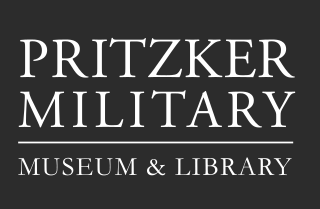
The Pritzker Military Museum & Library is a museum and a research library for the study of military history in Chicago, Illinois, US. It was founded in 2003 to be a non-partisan institution for the study of "the citizen soldier as an essential element for the preservation of democracy" by Colonel Jennifer Pritzker, who had just retired from the Illinois Army National Guard. Originally located in the Streeterville neighborhood at 610 N. Fairbanks Court, the library later moved to 104 S. Michigan Avenue in the Loop. The Museum & Library is supported by donations and membership.
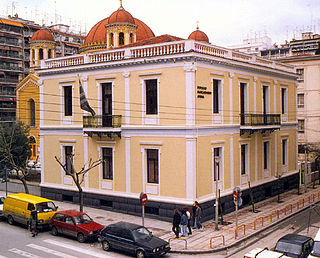
The Museum for the Macedonian Struggle is located in the centre of the city Thessaloniki in Central Macedonia, Greece. It occupies a neo-classical building designed by the renowned architect Ernst Ziller and built in 1893. In its six ground-floor rooms the museum graphically illustrates the modern and contemporary history of Greek Macedonia. It presents the social, economic, political and military developments that shaped the presence of Hellenism in the region. This approach enables the visitor to form a global picture, not only of the revolutionary movements in the area, but also of the rapidly changing society of the southern Balkans and its agonizing struggles to balance between tradition and modernization.

The Royal Museum of the Armed Forces and Military History is a military museum that occupies the two northernmost halls of the historic complex in Cinquantenaire Park in Brussels, Belgium.

The Plovdiv Regional Ethnographic Museum is a museum of ethnography in Plovdiv, Bulgaria. Since 1938, it has occupied the 1847 house of the merchant, Argir Kuyumdzhioglu, in the city's Old Town. The museum features six exhibitions, each occupying a separate room.

The National Polytechnical Museum is a science museum located in Sofia, Bulgaria.

